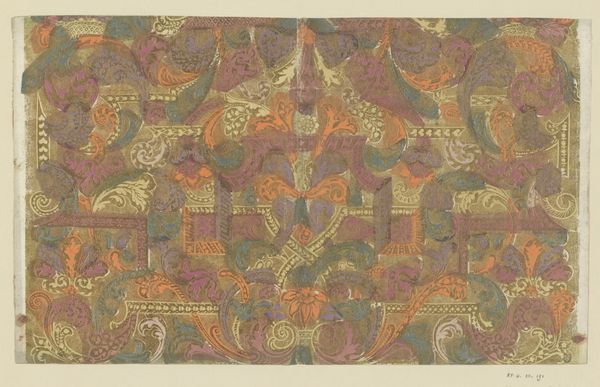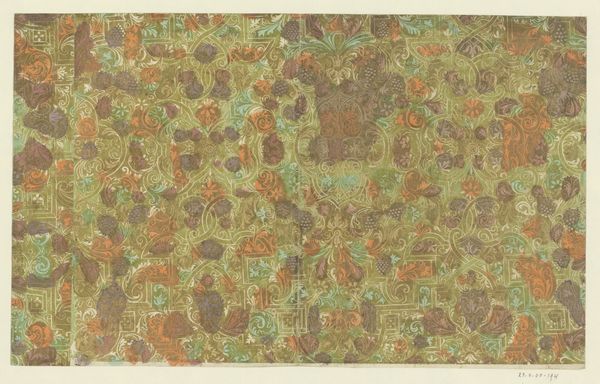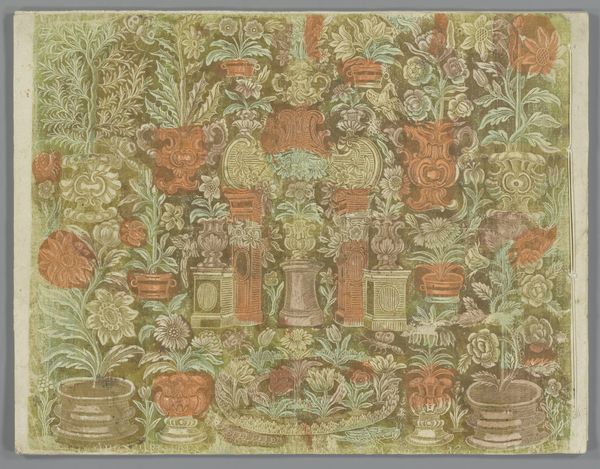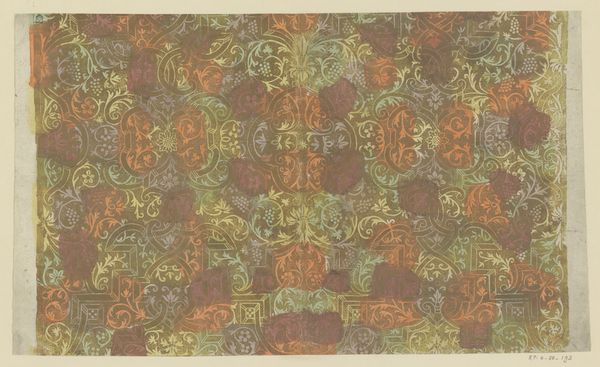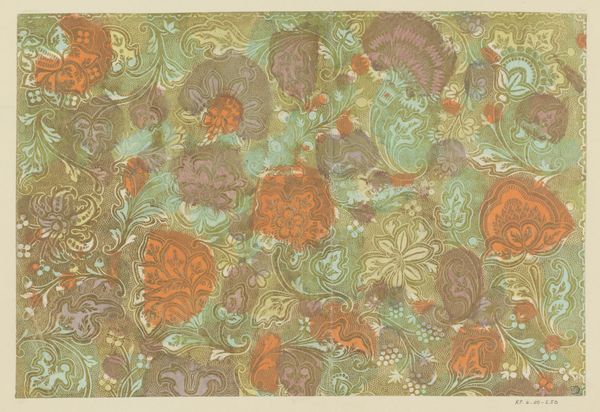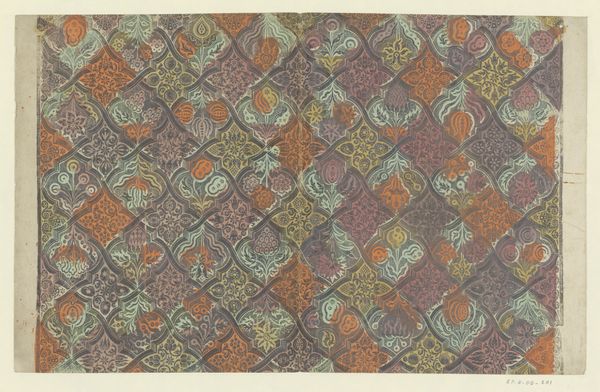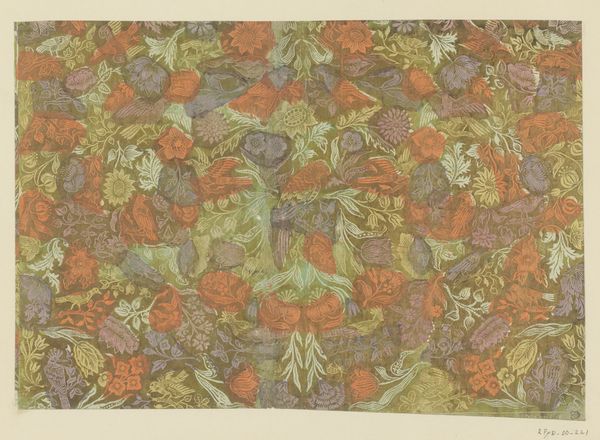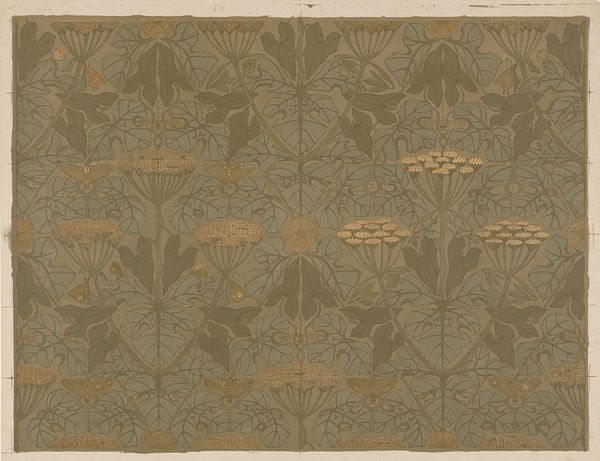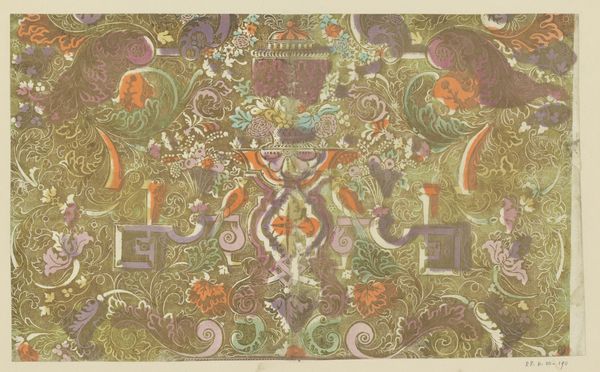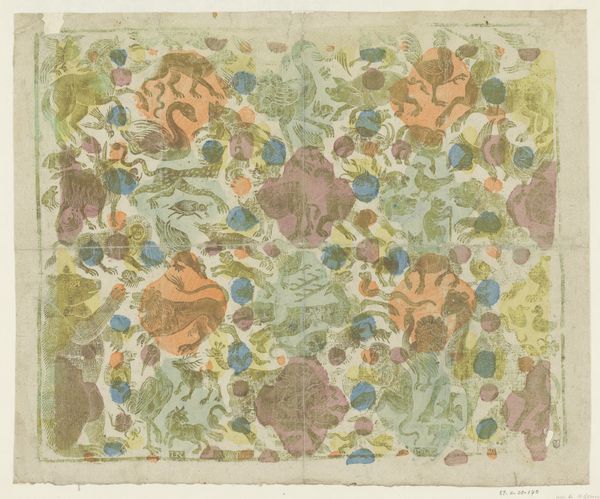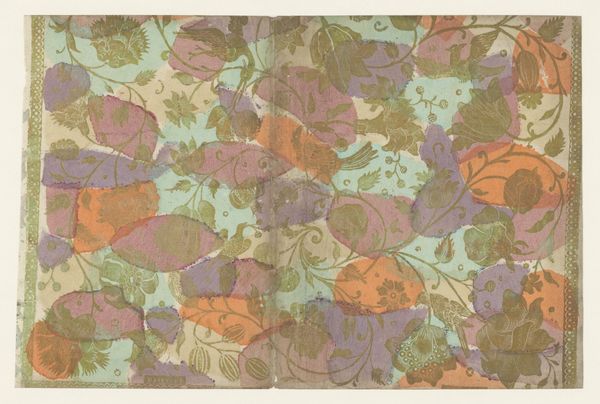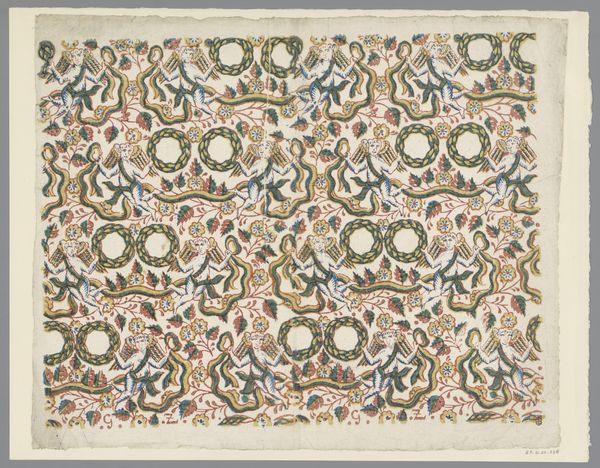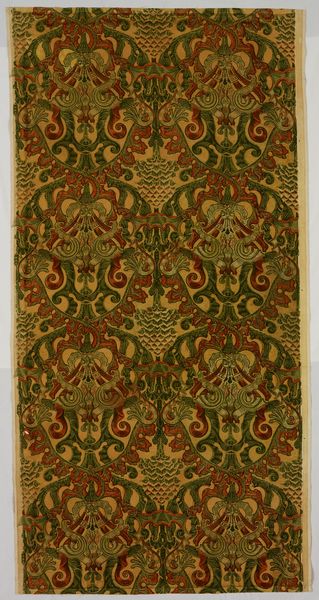
Blad met banen met ranken met ornamenten met bloemen en vruchten 1703 - 1750
0:00
0:00
drawing, paper
#
pattern heavy
#
drawing
#
natural stone pattern
#
naturalistic pattern
#
organic
#
baroque
#
paper
#
geometric pattern
#
pattern background
#
abstract pattern
#
organic pattern
#
vertical pattern
#
pattern repetition
#
decorative-art
#
layered pattern
Dimensions: height 279 mm, width 454 mm
Copyright: Rijks Museum: Open Domain
Editor: This drawing, “Blad met banen met ranken met ornamenten met bloemen en vruchten,” by Georg Christoph Stoy, likely made between 1703 and 1750, showcases intricate patterns. I'm struck by how dense and layered it feels. All those natural elements—the flowers, fruits, and vines—create such an elaborate scene. How would you interpret the visual language at play in this artwork? Curator: Indeed, it's a fascinating display of symbolic density! Given the era, and considering the decorative arts context, the consistent repetition suggests more than just aesthetic preference. We see in Baroque designs the potent blend of religious symbolism with assertions of worldly power. Do you notice how each section, though individual, mirrors and reinforces the others? Editor: Yes, it's almost like looking at reflections in a series of mirrors, or echoes. Each one is slightly different but contributes to the same overall feeling. Curator: Exactly! Think of the fruit, for example, and the flowers: abundance and fertility, common visual symbols in the 18th century, referencing wealth and prosperity. The organizational framework further contributes meaning, wouldn't you agree? It's clearly planned, geometric; yet these firm structural lines frame organic elements. Do these coexisting shapes suggest any conflicting concepts to you? Editor: Perhaps a tension between the cultivated world and untamed nature, then? The rigid framework trying to contain all of this natural growth? Curator: Precisely! And that very tension reflects a common Baroque theme – the attempt to reconcile human order with the natural world, even domesticate it to some extent, mirroring cultural attitudes of the time. It’s a narrative encoded in pattern. Editor: It’s interesting how seemingly 'just' a decorative design can reveal so much about cultural values. Now when I look at it, it has so many layers of meaning that were invisible before. Curator: Visual patterns, once unlocked, truly enrich how we view history itself.
Comments
No comments
Be the first to comment and join the conversation on the ultimate creative platform.
